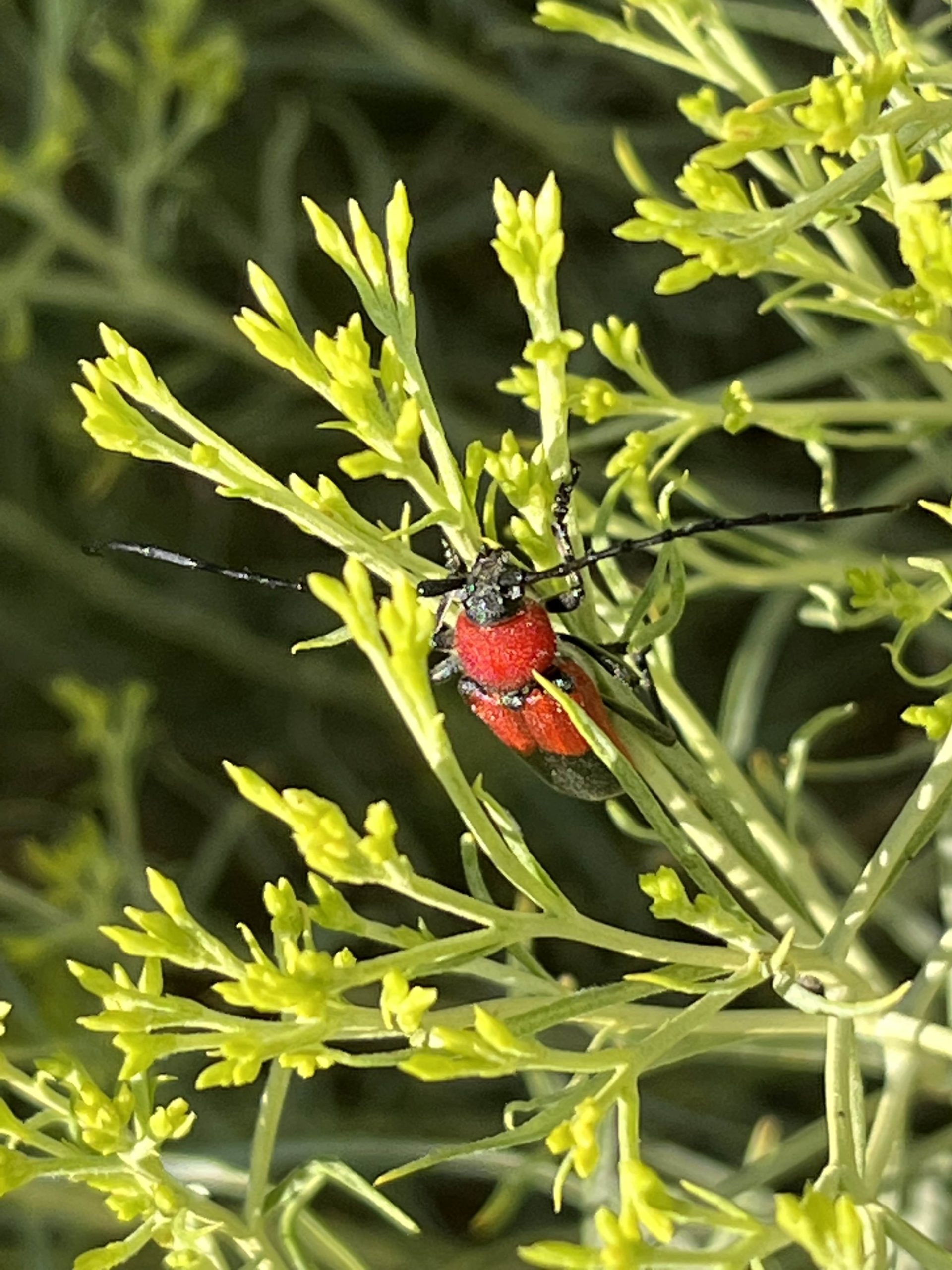
Courtesy US FWS, Thomas Maurer, Photographer
 Tiger Swallowtail, Papilio rutulus Lucas,
Tiger Swallowtail, Papilio rutulus Lucas,
Courtesy & Copyright Shalayne Smith-Needham, Photographer
 Western Swallowtail Butterfly Seeking Salt From Soil, 6/24/2017
Western Swallowtail Butterfly Seeking Salt From Soil, 6/24/2017
Courtesy & Copyright Hilary Shughart, PhotographerThe year of the tiger. Our mountains, canyons, and valleys are replete with tigers-there’s no escaping them, tiger swallowtail butterflies! Even my grandkids captured one, which entertained them for days. It had a damaged wing and preferred crawling to flying. It’s angelic beauty transfixed the onlookers. Although injured, it hung on for a week- about the average life span of an adult butterfly.
The normal range of the western tiger swallowtail covers much of western North America, from British Columbia to North Dakota in the north to Baja California and New Mexico south. Individuals occasionally turn up in eastern North America, though it is generally replaced by the similar eastern tiger swallowtail.
Western tigers emerge from winter chrysalids between February and May, the date depending on the temperature. They are seen earlier in the more southerly and coastal parts of their range. These are high energy butterflies, rarely seen at rest.
The females lay up to a hundred eggs on a wide variety of host plants including willows, aspens, ashes, poplars, alders, and cottonwood. The eggs are deep green, shiny, and spherical. They are laid singly, on the undersides of leaves. The caterpillars emerge about four days later.
The caterpillars molt five times, eventually reaching a length up to 2 inches before pupating to adults. In summer, the butterfly can emerge as quickly as 15 days after the caterpillar’s pupated, but when the caterpillar pupates in the fall, the butterfly does not emerge until the spring. For camouflage, the young caterpillars, strangely resemble bird poop as they hatch. Once they begin to molt, they turn bright green in color, with large, yellow eyespot marks studded with black and blue pupils. These fake eyes may frighten predators, along with retractable, iridescent, horn-like structures on their head.
To harvest nectar, a butterfly unfurls its proboscis, a tube that functions like a straw and is coiled below the head when not in use. It inserts the proboscis into the flower and sucks up nectar by rhythmically contracting the muscles in its head. Sugars in the nectar provide energy for flight, defense, reproduction, and other daily activities.
Tigers also obtain nutrients and replenish fluids through “puddling,” where they congregate in large groups on mud or wet sand around puddles, streambanks, or on piles of fresh manure. I’ve observed puddling many times, always a levitating experience! Here they take up salts, proteins, and minerals. Salt is scarce in the butterfly diet, but is essential for reproduction and flight.
Puddling is primarily a male behavior, and during mating, a male butterfly transfers salt to the female in a sperm package, which she incorporates into her eggs. Researchers have found that sodium increases reproductive success in some butterfly species. During puddling, groups of males are conspicuous to females seeking mates. Males also patrol at treetop level looking for mates, swooping down to intercept females.
Thus, if you see a tiger, don’t be alarmed, just relax and enjoy their exquisite beauty and fascinating behaviors.
This is Jack Greene for Bridgerland Audubon Society, and I’m wild about Utah, and its puddling tigers!!
Credits:
Image: Courtesy US FWS, Thomas Maurer, Photographer, https://www.fws.gov/media/western-tiger-swallowtail
Audio: Courtesy & © Kevin Colver, https://wildstore.wildsanctuary.com/collections/special-collections
Text: Jack Greene, Bridgerland Audubon, https://bridgerlandaudubon.org/
Additional Reading: Lyle W Bingham, Webmaster, Bridgerland Audubon, https://bridgerlandaudubon.org/
Additional Reading:
Jack Greene’s Postings on Wild About Utah, https://wildaboututah.org/author/jack/
Agyagos, Janie, Attracting Butterflies, USDA Forest Service, https://www.fs.usda.gov/Internet/FSE_DOCUMENTS/fseprd899349.pdf
Backyards for Butterflies, Division of Wildlife, Ohio Department of Natural Resources, State of Ohio, Publication 5089, January 2020, https://ohiodnr.gov/static/documents/wildlife/backyard-wildlife/Backyards%20for%20Butterflies%20pub089.pdf
Carroll, James, 2006, Eastern Tiger Swallowtails gathered at mineral trace along Blackwater River tributary in Western Florida, BugGuide.net, https://bugguide.net/node/view/79626
Canadian Tiger Swallowtail – Papilio canadensis, [Click to second picture to view puddling], Montana Field Guide. Montana Natural Heritage Program, https://fieldguide.mt.gov/speciesDetail.aspx?elcode=IILEP94250


![Click for a larger view: The Bird [A Mallard Drake] Courtesy & Copyright Shannon Rhodes, Photographer The Bees and the Birds: The Bird [A Mallard Drake] Courtesy & Copyright Shannon Rhodes, Photographer](https://wildaboututah.org/wp-content/uploads/rhodes.shannon.the-bird-min-scaled.jpg)



